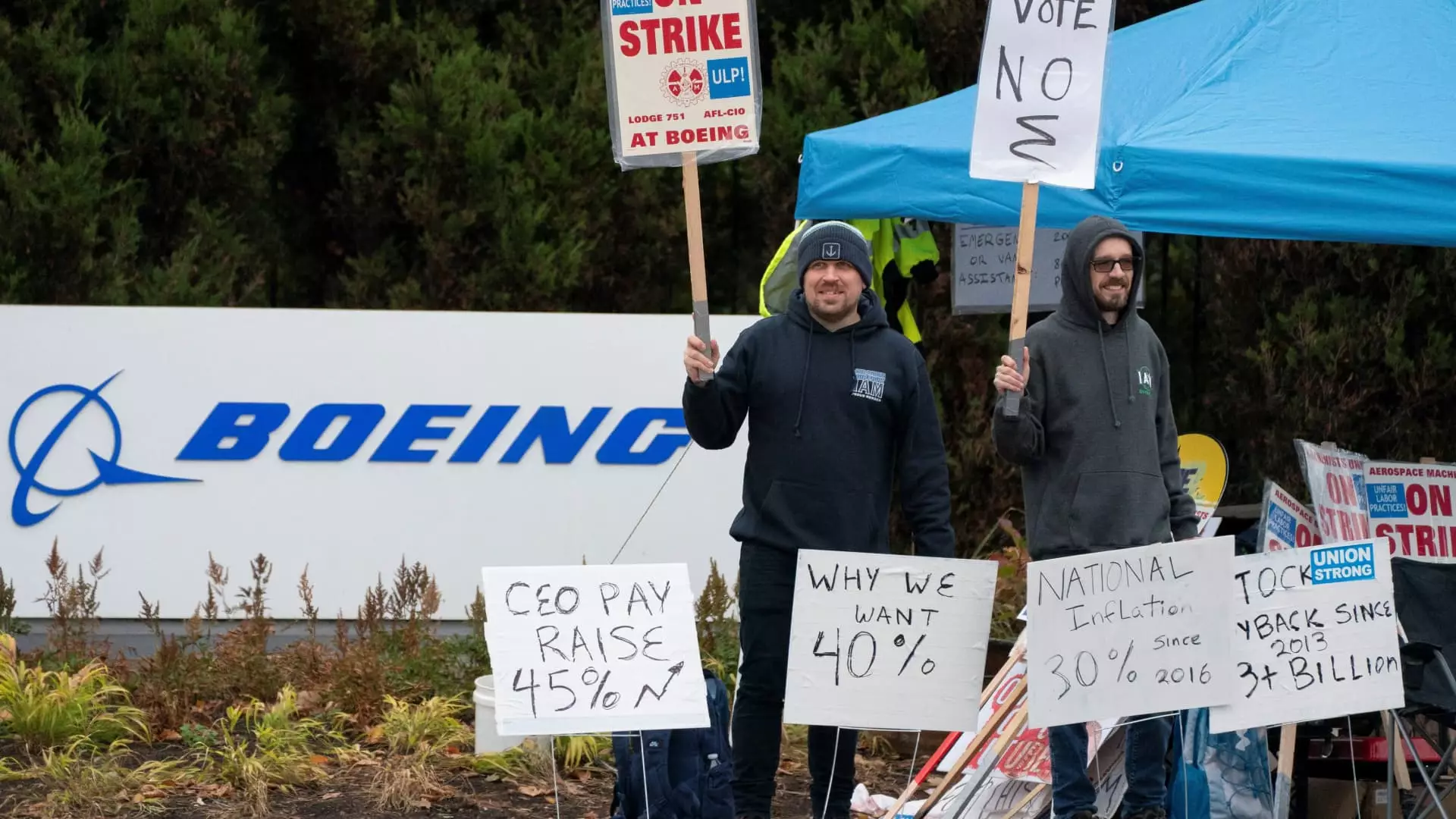The labor landscape at Boeing has recently borne witness to a pivotal moment as the machinists’ union has reached a tentative agreement that could potentially draw an end to a prolonged strike which has lasted over seven weeks. The stakes are high; Boeing, a juggernaut within the aerospace industry, has been grappling with substantial financial challenges, and the urgency to resume manufacturing operations is palpable. A vote on this new proposal is set for Monday, and it is a crucial juncture not only for the workers but also for the company’s future.
At the center of this negotiation is a proposed wage increase that aims to massage the longstanding grievances of workers who have felt the pressures of an escalating cost of living, particularly in the Seattle area where tech giants have been aggressively hiring. The new contract offers a 38% increase in wages over four years—a notch above a previously rejected 35% proposal—along with options for substantial one-time bonuses. Workers can opt for a $12,000 ratification bonus or alternatively choose a combination of a lesser bonus and a robust 401(k) contribution. This shift signals the union’s recognition of the sacrifices its members have made while also emphasizing the need for equitable compensation given the current economic climate.
The International Association of Machinists and Aerospace Workers District 751 has taken a firm stance that further extending the strike would be counterproductive. The union articulates a sentiment of having reached a limit in previous bargaining efforts, cautioning its members that prolonged labor action may lead to diminished offers in the future. This declaration reflects the delicate balance the union must maintain between advocating for its members’ rights and recognizing the overarching need for Boeing to stabilize its operations amidst significant losses that have reached the billions.
Boeing’s CEO, Kelly Ortberg, has made an emphatic plea for workers to unite and return to their positions. His message is underscored by a clarion call for the company to focus on regaining its competitive edge in crafting “the world’s best airplanes.” With over 32,000 machinists now off the job since September 13, the company’s productivity has taken a substantial hit, inevitably affecting its bottom line. At the heart of Ortberg’s communication is a pivotal understanding that collaboration between management and labor is crucial for recovery in a sector that is already facing significant headwinds.
The ongoing strike has not only raised concerns at the corporate level, but it has attracted the attention of governmental authorities, including the Biden administration. Acting Labor Secretary Julie Su’s involvement this week highlights the socio-economic implications of the labor dispute, which has left ripples in the U.S. employment figures. With the presidential election looming on November 5, the administration’s engagement signifies the broader economic stakes tied to Boeing’s operational capabilities.
As Boeing grapples with internal pressures, external factors have also begun to play a significant role in shaping the narrative. The soaring living costs in the Seattle region and the compounding pressures from the tech sector’s buoyancy have positioned Boeing’s wage negotiations against an increasingly competitive backdrop. The previous decision to transfer certain production lines, such as the 787 Dreamliner, to non-union facilities in South Carolina remains a sore point with workers, exacerbating feelings of insecurity among the workforce.
The tentative agreement provides a potential path towards resolution but also raises questions about the long-term viability of Boeing’s operations and labor relations. As the vote approaches, both union members and management face a critical choice—whether to embrace this proposal as a step towards recovery, or risk a deeper chasm that could affect not just their immediate livelihood but the entire aerospace sector’s future. The coming days will undoubtedly shape the trajectory of not just Boeing, but the industry as a whole, making it a critical moment in American labor history.

